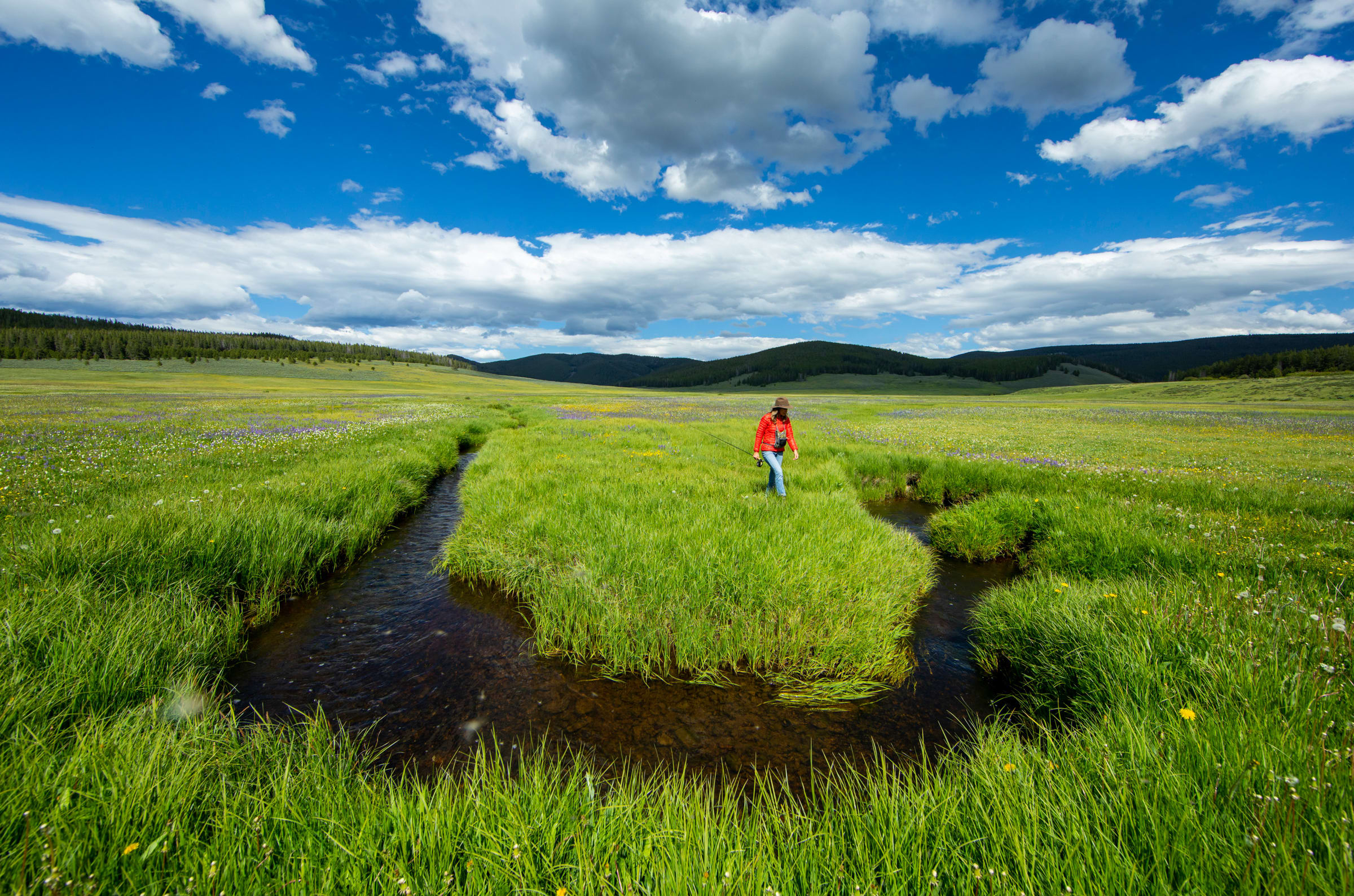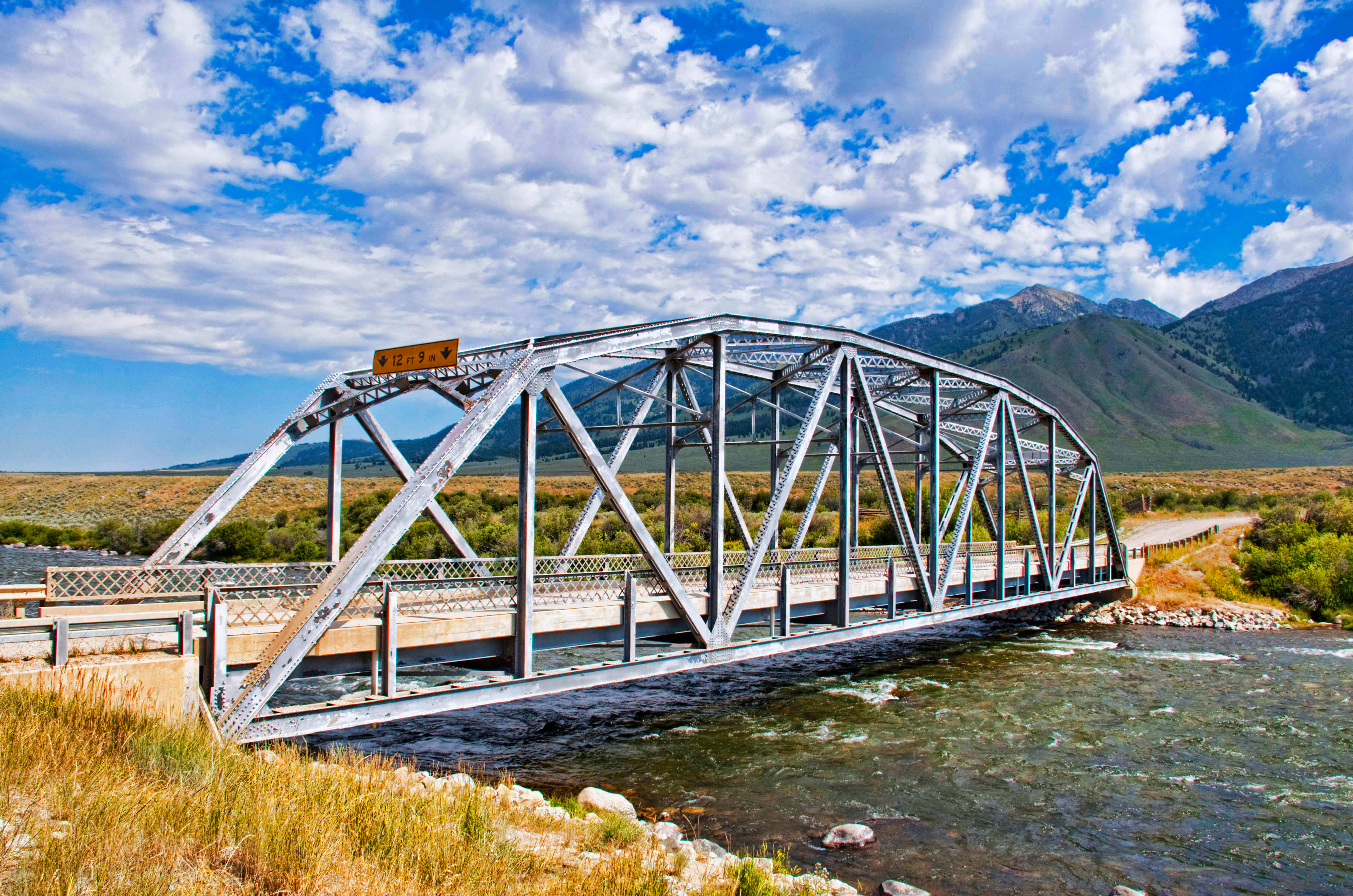SAVING FLUVIAL ARCTIC GRAYLING IN THE BIG HOLE SYSTEM
In the upper reaches of Montana’s Big Hole Valley, Western Rivers Conservancy has successfully conserved the 200-acre Eagle Rock Ranch, a game-changing project that will return critically needed water to the Wise River. The Wise is a major tributary to the Big Hole River, one of Montana’s best-known fly fishing streams and the Lower 48’s last remaining stronghold for fluvial Arctic grayling.
The Big Hole’s grayling rear in the cold waters of just five main tributaries, one of which is the Wise. But these cold streams have been increasingly vulnerable to water withdraws, development and a warming climate, which threaten grayling populations throughout the Big Hole system.
Fluvial Arctic grayling were candidates for listing under the Endangered Species Act for years, which spurred local ranchers, farmers, conservationists and others to voluntarily come together to improve conditions for the imperiled fish. The effort was largely successful. Now, protecting Big Hole tributaries and ensuring they remain clean and cold is critical to keeping these grayling populations alive.
RETURNING WATER TO THE WISE RIVER
In summer 2021, WRC purchased the Eagle Rock Ranch, which controls the upper-most major water rights on the Wise River. We then worked to secure funding to convey the property to the Beaverhead-Deerlodge National Forest. In July 2023, we succeeded in permanently conserving the property, ensuring the 11 CFS of water associated with the ranch will be managed for the benefit of the Wise River and its fish. WRC and the Forest Service have developed an innovative split season approach which will deliver water to fish when they need it, while allowing for irrigation of wild hay when they don’t.
When the river is running high in spring and early summer, the Forest Service will allocate the water to the meadow on the ranch, which grows wild hay for livestock and wildlife. The meadow will store and filter the water, keeping it clean and cold throughout the hot summer. That water will seep into the water table and move back toward the stream over the course of the summer, while simultaneously irrigating the wild hay, which supports both area wildlife and livestock.
This means that in late summer, when flows are low in the Wise River, there will be cold-water return from the meadow via ground water, back into the stream. Additionally, when the river is low in the drier months, the Forest Service will cease irrigating the meadow, and will divert water back into the Wise River to enhance in-stream flows. The increased flows will benefit not just grayling, but westslope cutthroat trout and mountain whitefish, as well as the non-native rainbow and brown trout for which the Big Hole is famous among fly anglers.
PRESERVING HABITAT FOR BIRDLIFE, ENHANCING PUBLIC ACCESS
In addition to being the West’s only stronghold for Arctic grayling, the Big Hole Valley provides outstanding habitat for birds. Upstream of the Wise River confluence, the flat, meandering nature of the Big Hole, coupled with extensive winter snows and late snowmelt, result in abundant wetlands that harbor everything from sandhill crane and long-billed curlew (a migratory shorebird) to sage grouse, American kestrel, killdeer and golden and bald eagle. These and other species rely on the open country of the Big Hole Valley, including places like the ranch that WRC conserved.
This project is also a big win for recreation, as the Forest Service’s acquisition of the property will enhance public access to the National Forest on the east bank of the Wise River, thus expanding opportunities in the area for fishing and hiking.
Now that we have transferred Eagle Rock Ranch to the U.S. Forest Service, this rare, unprotected inholding within the Beaverhead-Deerlodge National Forest will remain intact, and the ranch’s water will now be used to alternately irrigate wet meadows and place water in-stream for the sake of the Big Hole’s wild fish, exceptional birdlife and other wildlife.








